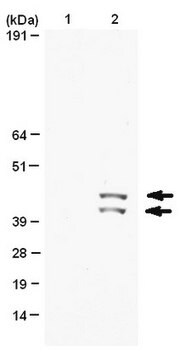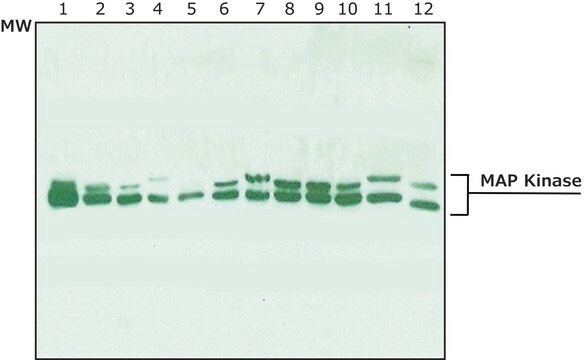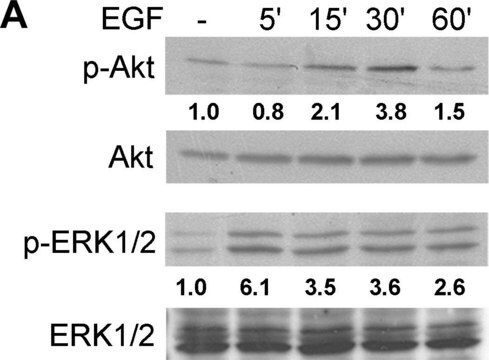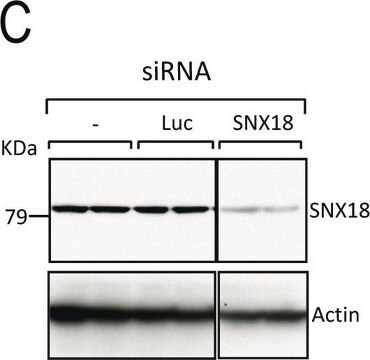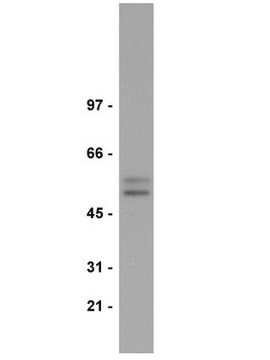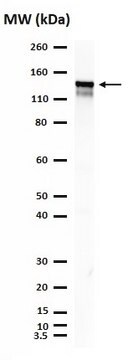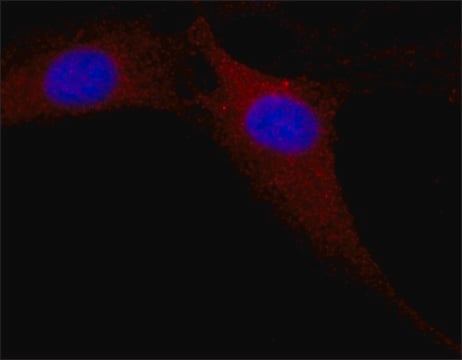Wichtige Dokumente
M7683
Anti-phospho-MAP Kinase Kinase 1/2 (pSer217/221) antibody produced in rabbit
affinity isolated antibody, buffered aqueous glycerol solution
Synonym(e):
Anti-phospho-MEK 1/2 (pSer217/221)
About This Item
Empfohlene Produkte
Biologische Quelle
rabbit
Qualitätsniveau
Konjugat
unconjugated
Antikörperform
affinity isolated antibody
Antikörper-Produkttyp
primary antibodies
Klon
polyclonal
Form
buffered aqueous glycerol solution
Mol-Gew.
antigen 45 kDa
Speziesreaktivität
human, rat, mouse
Methode(n)
flow cytometry: 1:50 using PMA treated human peripheral blood lymphocytes and Jurkat cells.
immunocytochemistry: 1:1,000 using HeLa cells
immunohistochemistry (formalin-fixed, paraffin-embedded sections): 1:100 using tissue sections from human breast carcinoma
immunoprecipitation (IP): 1:50
western blot: 1:1,000 using serum-treated NIH-3T3 cells
UniProt-Hinterlegungsnummer
Versandbedingung
wet ice
Lagertemp.
−20°C
Posttranslationale Modifikation Target
phosphorylation (pSer217/pSer221)
Angaben zum Gen
human ... MAPK1(5594)
mouse ... Mapk1(26413)
rat ... Mapk1(116590)
Allgemeine Beschreibung
The antibody specifically recognizes MEK1/2 (45 kDa) only when phosphorylated at Ser217 and Ser221. It reacts strongly with MEK1/2 phosphorylated only at Ser217, but less when phosphorylated only at Ser221. It shows not cross reaction with any other related family members including SEK.
Spezifität
Immunogen
Anwendung
Physikalische Form
Haftungsausschluss
Sie haben nicht das passende Produkt gefunden?
Probieren Sie unser Produkt-Auswahlhilfe. aus.
Lagerklassenschlüssel
10 - Combustible liquids
Flammpunkt (°F)
Not applicable
Flammpunkt (°C)
Not applicable
Hier finden Sie alle aktuellen Versionen:
Besitzen Sie dieses Produkt bereits?
In der Dokumentenbibliothek finden Sie die Dokumentation zu den Produkten, die Sie kürzlich erworben haben.
Unser Team von Wissenschaftlern verfügt über Erfahrung in allen Forschungsbereichen einschließlich Life Science, Materialwissenschaften, chemischer Synthese, Chromatographie, Analytik und vielen mehr..
Setzen Sie sich mit dem technischen Dienst in Verbindung.